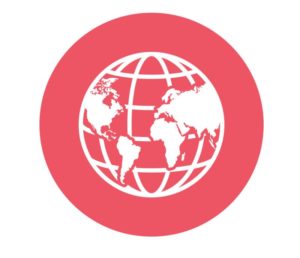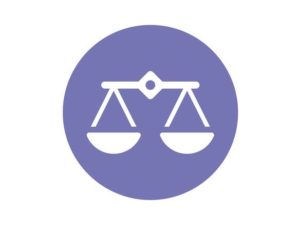September is Government Applications Month at FindBiometrics, during which we are placing a featured focus on the identity management and strong authentication technologies that keep modern society secure, convenient, and safe. From military ID and physical access control, to border security, law enforcement and next-gen voting, biometric technology has become a key component of the contemporary nation. To start Government Applications Month right, we have compiled a primer of government biometrics terms and trends to bring you up to speed on the current market landscape.
The Government Market
 According to recent research from Tractica, biometric technology is being adopted for use in government applications at an increasing pace, and this is contributing to the continued growth of the Global Biometrics Market, which the firm has pegged to hit $15.1 billion by 2025. The government applications of biometrics are diverse, but a large part of the sector in question is the Military Biometrics Market. A new report from Transparency Market Research show the Military Biometrics Market on the grow, particularly in the Asia Pacific region as biometrics are deployed to defend against terrorism. Read more about these recent market reports dealing with government applications of biometrics:
According to recent research from Tractica, biometric technology is being adopted for use in government applications at an increasing pace, and this is contributing to the continued growth of the Global Biometrics Market, which the firm has pegged to hit $15.1 billion by 2025. The government applications of biometrics are diverse, but a large part of the sector in question is the Military Biometrics Market. A new report from Transparency Market Research show the Military Biometrics Market on the grow, particularly in the Asia Pacific region as biometrics are deployed to defend against terrorism. Read more about these recent market reports dealing with government applications of biometrics:
TMR Report Details Continuing Ascent of Military Biometrics Market
Biometrics Market to Reach $15.1 Billion by 2025: Tractica
National ID
 Governments are turning to biometrics as a form of civil identification, otherwise known as National ID. Using biometrics as a form of citizen registry, linking relevant biographical and contextual information to a person’s fingerprints or irises has a great deal of benefits. A robust biometric national ID program can curb fraud, enable access to essential services, and make civic obligations more convenient. Of course, biometric ID programs are some of the most ambitious identity management initiatives in the world, and as such they occasionally run into logistical issues. The following articles will shed light on the ambition, the benefits, and the obstacles in biometric national ID.
Governments are turning to biometrics as a form of civil identification, otherwise known as National ID. Using biometrics as a form of citizen registry, linking relevant biographical and contextual information to a person’s fingerprints or irises has a great deal of benefits. A robust biometric national ID program can curb fraud, enable access to essential services, and make civic obligations more convenient. Of course, biometric ID programs are some of the most ambitious identity management initiatives in the world, and as such they occasionally run into logistical issues. The following articles will shed light on the ambition, the benefits, and the obstacles in biometric national ID.
Gemalto to Provide eID Solution to Swedish Tax Agency
Nigerian Authorities to Register Citizens’ Biometrics in 2018 Census
OPEC Development Official Becomes Latest to Decry Biometric Data Inefficiency in Nigeria
Philippines President Gives Go-Ahead to Biometric ID Program
French Gov’t Orders Creation of National Biometric Database
Aadhaar
 If you want to see a biometric government in action, look to India. The Aadhaar national ID program runs on fingerprint, iris, and face biometrics. Over one billion people are enrolled in Aadhaar, and while it has given rise to privacy concerns, it has already produced tangible social improvements. Aadhaar enables biometric payments in India, it helps allocate government subsidies, and it cuts down on government graft thanks to attendance tracking integrations. The following links will give you an overview of the most ambitious government application of biometrics on the planet.
If you want to see a biometric government in action, look to India. The Aadhaar national ID program runs on fingerprint, iris, and face biometrics. Over one billion people are enrolled in Aadhaar, and while it has given rise to privacy concerns, it has already produced tangible social improvements. Aadhaar enables biometric payments in India, it helps allocate government subsidies, and it cuts down on government graft thanks to attendance tracking integrations. The following links will give you an overview of the most ambitious government application of biometrics on the planet.
BRIEF: Meet Aadhaar, the World’s Most Ambitious National ID Program
Delta ID Pushes for Iris-Based Aadhaar Authentication
NEC Celebrates as Aadhaar Marches Beyond Billionth Enrolment
Hindu Nationalists Call for Aadhaar Screenings at Religious Dances
Aadhaar Could Be Used to Stop Stock Market Money Laundering
Death Certificate Order Extends Aadhaar from Cradle to Grave
Biometric Democracy
 On a smaller scale than national ID, biometric voter registry can be used to ensure easy, secure, and accountable electronic voting. Fingerprint and face recognition have each been deployed for purposes of fair elections around the world, and the trend is catching on. Read more about biometric democracy with the following articles:
On a smaller scale than national ID, biometric voter registry can be used to ensure easy, secure, and accountable electronic voting. Fingerprint and face recognition have each been deployed for purposes of fair elections around the world, and the trend is catching on. Read more about biometric democracy with the following articles:
TIVI System Uses Selfies for Online Voting
American Voters Want Change in Voting Technology: Smartmatic
Safran Tech Used in Two Recent Biometric Votes in Ivory Coast
Biometric Election Tech Shipment Offers Reassurance in Sierra Leone
Kenyan Authorities Seek to Register Voters’ Biometrics Ahead of General Election
Biometric Borders
 A nation is defined by its borders, and in today’s climate of convenient world travel and global conflict, biometrics are helping maintain said dividing lines. Biometrics are deployed to secure ports of exit and entry while also providing extra convenience to pre-screened individuals. The following articles will provide background on how biometrics are being talked about, tested and deployed at national borders across the globe.
A nation is defined by its borders, and in today’s climate of convenient world travel and global conflict, biometrics are helping maintain said dividing lines. Biometrics are deployed to secure ports of exit and entry while also providing extra convenience to pre-screened individuals. The following articles will provide background on how biometrics are being talked about, tested and deployed at national borders across the globe.
Iris ID Radio Talks Canadian Biometric Border Control With FindBiometrics [AUDIO]
Australian Government Hires Vision-Box to Provide Contactless Airport Screening Tech
Japanese Gov’t Preparing Biometric Airport Screening
CBP Brings Biometric Exit Program to Houston
DHS, TSA Test Contactless Fingerprint Scanning at Atlanta, Denver Airports
Refugees
 In 2017, a discussion of state cannot be had without the acknowledgement of statelessness—refugees continue to flee from their once-homes, forgoing the privilege of a nation. The UNHCR, in its efforts to address the ongoing refugee crisis, has turned to biometrics as a form of ID for the displaced. Iris biometrics are being deployed in refugee camps the world over so that those interned within can live with the dignity of an identity.
In 2017, a discussion of state cannot be had without the acknowledgement of statelessness—refugees continue to flee from their once-homes, forgoing the privilege of a nation. The UNHCR, in its efforts to address the ongoing refugee crisis, has turned to biometrics as a form of ID for the displaced. Iris biometrics are being deployed in refugee camps the world over so that those interned within can live with the dignity of an identity.
BRIEF: How Biometric Tech is Helping Refugees
Better to Manage Refugees Than Refuse Them: UNHCR
UN Official Lauds Benefits of Biometrics in Fight Against Statelessness
UNHCR Reiterates Support for Biometric Registration of Refugees After Bangladesh Visit
Malaysian Gov’t Considering Biometric Refugee Registration to Counter Islamic State Threat
Law Enforcement
 Law enforcement is arguably the market with the oldest biometric applications, thanks to the century-old practice of fingerprinting. Today, government agencies work with biometrics vendors to leverage facial recognition, fingerprint biometrics, and other modalities in order to aid in the apprehension of suspected criminals. Read more about recent law enforcement biometrics news by clicking the following links:
Law enforcement is arguably the market with the oldest biometric applications, thanks to the century-old practice of fingerprinting. Today, government agencies work with biometrics vendors to leverage facial recognition, fingerprint biometrics, and other modalities in order to aid in the apprehension of suspected criminals. Read more about recent law enforcement biometrics news by clicking the following links:
UK Home Office to Get Upgraded Crossmatch Tech for Criminal Booking
Crossmatch Emphasizes Government Collaboration in FABrIC Work
NEC-Miyoshi Partnership to Bring Facial Recognition to Body Cameras
South Wales Police Expanding Use of NEC Facial Recognition Tech
Maharashtra Considers Safran, NEC Bids for Biometric Criminal Registration System
Government Research and Testing
 Governments are also responsible for stoking the fires of biometric advancement. Through testing standards, technology competitions, and research initiatives, federal organizations like NIST are facilitating advances in forensics, liveness detection, and matching accuracy. Check out the following articles to see how government research and testing fits into the larger biometrics conversation.
Governments are also responsible for stoking the fires of biometric advancement. Through testing standards, technology competitions, and research initiatives, federal organizations like NIST are facilitating advances in forensics, liveness detection, and matching accuracy. Check out the following articles to see how government research and testing fits into the larger biometrics conversation.
Competition Seeks Automated N2N Fingerprint Capture
Green Bit Moves to N2N Challenge Finals
Crossmatch-ISORG-FlexEnable Team Advances to Finals of IARPA’s N2N Challenge
SRI Wins 4-Year, $12.5M Contract to Develop Anti-Spoofing Tech for IARPA
More Than Money at Stake in IARPA’s Face Recognition Prize Challenge
Crossmatch to Develop Presentation Attack Detection Tech for IARPA’s Thor Program
NIST Report Outlines Limits of Facial Recognition on Video, and How to Push Them
NEC Gets Top Ranking in Latest NIST Facial Recognition Test
Ethics, Communications, and Privacy
 Due to the personal nature of identity, when governments turn to new technologies like biometrics controversy isn’t far behind. Conversations about ethics and privacy are happening in 2017 that could prove foundational to how biometrics are used in government applications in the future. Here are just a few:
Due to the personal nature of identity, when governments turn to new technologies like biometrics controversy isn’t far behind. Conversations about ethics and privacy are happening in 2017 that could prove foundational to how biometrics are used in government applications in the future. Here are just a few:
Rebranded UK Gov’t Advisory Body to Consider Biometrics Ethics
DHS Biometrics Departments Seeks Help with Communications Strategy
CBP Begins Talks with Privacy Advocates on Biometric Border Screening
ACLU Fears Mission Creep, Racial Prejudice in Biometric Airport Screening
*
Stay posted to FindBiometrics throughout September as we continue to bring you featured content on the topic of Government Applications in Biometrics.
*
Government Applications Month is made possible by our sponsors: NEC and Crossmatch


Follow Us